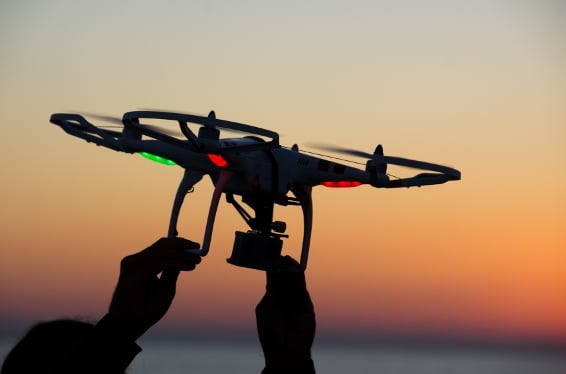Drones and technology are sometimes viewed as dangerous and threatening by insurance professionals. But they can revolutionize the insurance industry … if we let them.
New technology and software can expand human capability and dramatically increase efficiency in the insurance industry, according to George Mathew, CEO, Kespry.
Kespry is an aerial intelligence platform provider with a focus on the commercial drone market, particularly around heavier industrial use in the mining and aggregate industry, construction and the insurance industry. It was recently selected by
Farmers Insurance to support the claims process of
Farmers’ customers who have suffered significant roof damage due to adverse weather events.
“Kespry drones can be hugely beneficial in the claims process,” said Mathew. “Consider what happens when a huge hail storm hits a significant sized town in the US. It can result in 10-20,000 claims that need processing in a very short amount of time. Most companies don’t have enough claims adjusters to deal with such a large number of claims quickly and efficiently. Drones can be the solution to this problem.
“A drone can be used to assist the claims adjuster by flying overhead, taking an image of the rooftop, using automation to detect hail-damage and creating a full topological model of the situation - all of which can be done quickly and efficiently. On top of that, it’s much safer than a claims adjuster physically climbing on to a damaged roof to manually assess damage. That’s a laborious and dangerous process that can be avoided with drone assistance.”
Using a drone’s “full aerial intelligence platform” helps claims adjusters accomplish more in a working day. Anyone who’s worried about losing their job to technology should stop worrying and start thinking about how to use it to their benefit, according to Mathew.
“The insurance industry is really fascinating at the moment. There are so many opportunities to enhance and augment human labor with technology rather than displace it,” Mathew told
Insurance Business. “The interesting question lies in who is going to be trusted to make a better evaluation and judgement of what has occurred – the machine or the human?
“At Kespry we try to encourage people to marry the two together. Technology can be used to augment human potential and drone intelligence can be used to support the hypothesis of a human. The human laborer is not becoming redundant but is rather entering a time of greater efficiency and accuracy in the workplace.”
Related stories:
New commercial drone offering from Munich Re
Why insurers and drones may not mix


